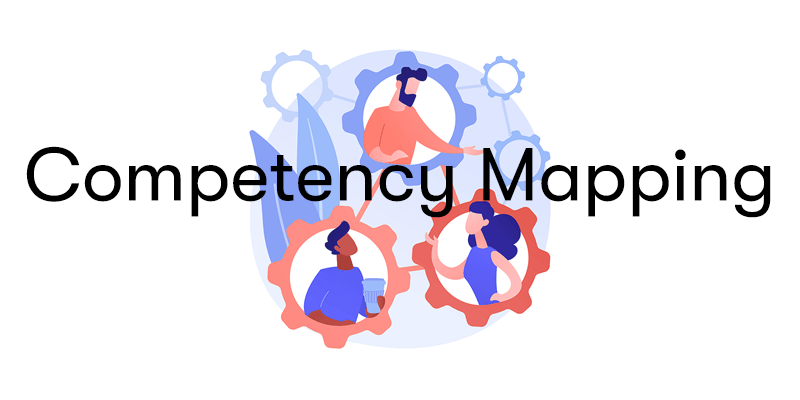Competency Mapping
Competency mapping is a strategic HR process that identifies and evaluates the skills, knowledge, and behaviours required for successful job performance.
But did you know that this practice has a rich history? Competency mapping traces its roots back to the 1970s when organisations started focusing on individual competencies rather than just job descriptions. Over the years, it has evolved into a crucial tool for aligning workforce capabilities with organisational goals, fostering employee development, and driving overall success. Let's delve deeper into the world of competency mapping and discover how it can transform your organisation!
What is Competency Mapping?
Competency mapping is a process used in human resource management to identify, assess, and analyse the competencies and skills required for employees to perform effectively in their roles within an organisation. It involves creating a comprehensive framework that defines the behaviours, knowledge, abilities, and personal characteristics necessary for successful job performance.
The process of competency mapping typically involves interviews, surveys, and assessments to gather information from employees, supervisors, and subject matter experts. The collected data is then analysed to create a competency framework, which serves as a valuable tool for various HR processes, including recruitment, performance management, and employee development. By mapping competencies, organisations can better align their workforce with their strategic goals and improve overall productivity and performance. Check out our competency management system to see how easy it can be!
What are the Objectives of Competency Mapping?
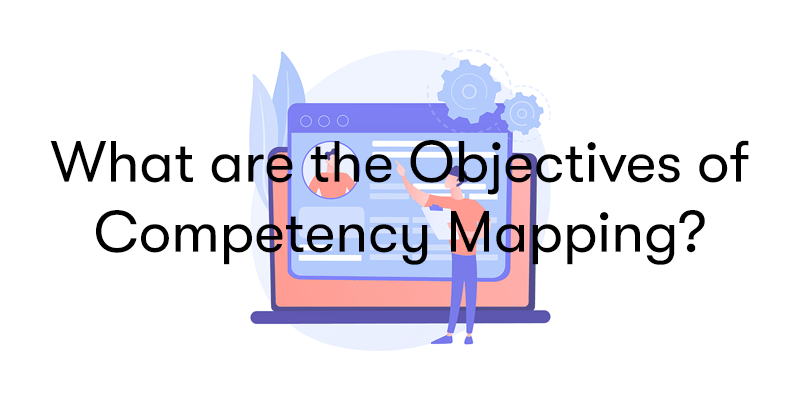
The main objectives of competency mapping are:
Job Analysis
Competency mapping begins with a thorough job analysis, where HR professionals and subject matter experts analyse job roles and responsibilities within the organisation. This analysis helps identify the core competencies required for each role, ensuring that employees possess the necessary skills and abilities to perform their jobs effectively.
Skill Identification
Competency mapping involves identifying the specific skills, knowledge, and behaviours that are essential for successful job performance. These can be technical skills, soft skills, domain knowledge, leadership abilities, problem-solving skills, communication skills, and more. Identifying the key competencies enables organisations to define clear expectations for employees.
Gap Analysis
Once the desired competencies for each role are established, the next step is to conduct a Gap analysis. This involves comparing the existing competencies of employees with the required competencies for their respective roles. The gaps identified highlight areas where employees may need further training, development, or support to meet the job requirements effectively.
Training and Development
One of the primary goals of competency mapping is to design targeted training and development programs based on the identified skill gaps. By addressing these gaps through training initiatives, organisations can improve employee performance, enhance job satisfaction, and increase overall productivity.
Performance Management
Competency mapping provides a solid foundation for creating effective performance appraisal systems. When performance assessments are aligned with the identified competencies, evaluations become more objective and meaningful. Managers can assess employees' performance based on the specific skills and behaviours required for their roles, making the process fairer and more transparent.
Career Development
Competency mapping can also be used to facilitate career development within the organisation. By identifying the skills and competencies required for different roles and career paths, employees can be guided towards appropriate developmental opportunities and career advancement within the company.
Succession Planning
Competency mapping plays a crucial role in succession planning, especially for leadership positions. Identifying and nurturing employees with the necessary competencies can ensure a steady supply of skilled individuals to fill key roles as they become available due to retirements or promotions.
Recruitment and Selection
The competency mapping framework can be utilised in the recruitment and selection process to assess potential candidates against the required competencies. This ensures that new hires are better aligned with the organisation's needs and culture.
Employee Engagement and Retention
When employees see that their skills and competencies are recognised and valued, it can boost their morale, engagement, and job satisfaction. Competency mapping helps create a supportive environment where employees feel motivated to improve and contribute to the organisation's success, increasing retention rates.
How to Conduct Competency Mapping?
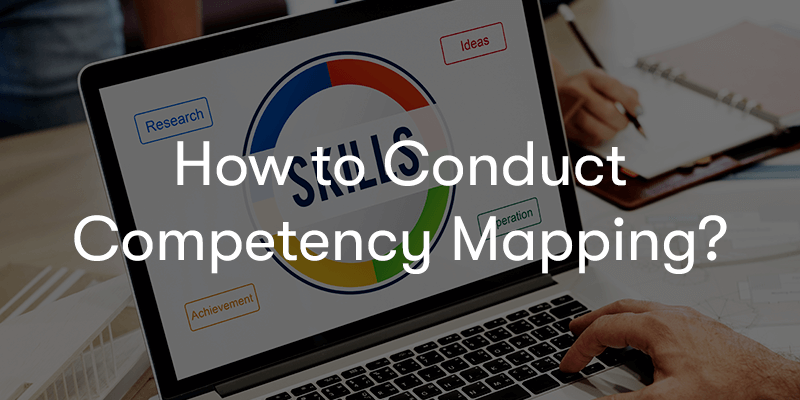
Conducting competency mapping involves a systematic and well-structured approach. Here's a step-by-step guide on how to conduct competency mapping within an organisation:
Identify Job Roles
Begin by identifying the key job roles and positions within your organisation. This can be done through job analysis, interviews with managers, and subject matter experts. Clearly define the responsibilities, tasks, and expected outcomes for each role.
Create Competency Framework
Develop a competency framework that outlines the desired competencies for each job role. These competencies should include both technical skills (like job-specific knowledge) and behavioural skills (like, communication, leadership, problem-solving).
Gather Data
Collect data from various sources to identify the required competencies. Some methods to gather data include:
- Employee Interviews: Conduct one-on-one interviews with employees to understand their perceptions of the skills needed for their roles and the challenges they face.
- Supervisor and Manager Feedback: Get input from supervisors and managers about the skills and behaviours they consider critical for successful performance in specific roles.Subject Matter Experts: Involve subject matter experts who have deep knowledge of the job roles and industry to provide insights into the competencies needed.
- Job Analysis Questionnaires: Use questionnaires or surveys to collect information about job roles, tasks, and the skills required from employees.
Analyse Data
Analyse the data collected to identify common themes and patterns regarding the competencies needed for each job role. Look for gaps between the current skill levels of employees and the desired competencies.
Develop Competency Profiles
Based on the analysis, create competency profiles for each job role. These profiles should clearly outline the skills, knowledge, and behaviours required for successful performance.
Validation
Validate the competency profiles with relevant stakeholders, including employees, managers, and subject matter experts. Ensure that the identified competencies are accurate and align with the organisation's goals.
Gap Analysis
Conduct a gap analysis by comparing the existing competencies of employees with the competencies required for their roles. Identify areas where training and development are needed to bridge the gaps. A Perfect tool for this is our competency management system - OpusView
Training and Development Programs
Develop targeted training and development programs to address the identified competency gaps. These programs can include workshops, seminars, online courses, mentoring, and on-the-job training.
Integration into HR Processes
Integrate the competency framework into various HR processes, such as recruitment, performance appraisal, career development, and succession planning. Ensure that the competencies are used consistently across the organisation.
Continuous Review and Updates
Competencies and job roles can evolve over time due to changes in the industry or organisation. Regularly review and update the competency framework to keep it relevant and aligned with current needs.
Communication and Rollout
Communicate the competency mapping results to employees and stakeholders. Explain the purpose of the exercise, the benefits it brings to individuals and the organisation, and how it will be integrated into HR processes.
Remember that competency mapping is an ongoing process that requires collaboration, feedback, and continuous improvement. It should be viewed as a dynamic tool that helps organisations enhance the capabilities of their workforce and achieve their strategic objectives.
What are the Benefits to Competency Mapping?
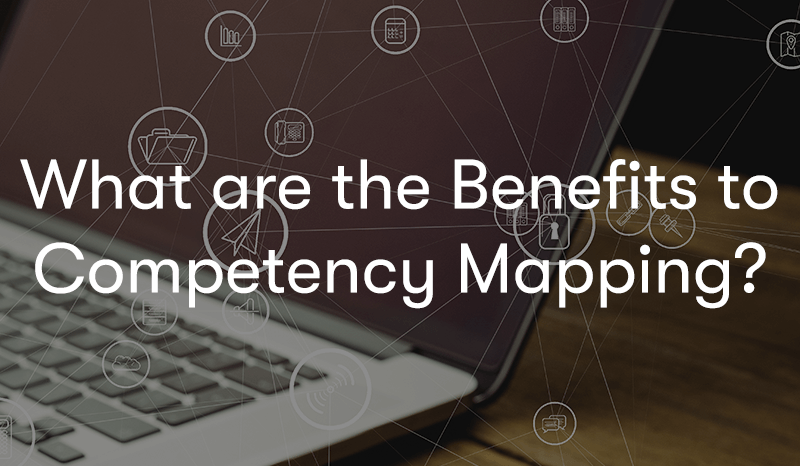
Competency mapping offers several significant benefits to an organisation compared to not using it. Let's explore some of the key advantages:
Clear Performance Expectations
Competency mapping helps establish clear performance expectations for each job role. By defining the required skills and behaviours, employees know exactly what is expected of them, leading to improved performance and accountability.
Effective Recruitment and Selection
With competency mapping, organisations can create detailed job descriptions that outline the essential competencies for each role. This ensures that the recruitment and selection process is more targeted, leading to the hiring of candidates who are better suited to the job.
Improved Performance Management
Competency-based performance evaluations provide a more objective and standardised approach to assessing employees' performance. This, in turn, facilitates fairer appraisals and identifies areas where employees can excel or need further development.
Focused Training and Development
Competency mapping highlights the gaps in employees' skills and knowledge. By identifying these areas, organisations can design targeted training and development programs that address specific needs, resulting in a more skilled and capable workforce.
Enhanced Employee Engagement
When employees see that their skills and competencies are recognised and valued, they are more likely to feel engaged and motivated. Competency mapping fosters a culture of continuous improvement, increasing employee satisfaction and reducing turnover rates.
Succession Planning and Career Development
Competency mapping enables organisations to identify potential leaders and high-potential employees. This information is vital for succession planning, allowing the organisation to groom and prepare employees for higher-level roles.
Better Team Building
Understanding the strengths and weaknesses of team members based on their competencies helps managers build more balanced and effective teams. Complementary skill sets can be leveraged to achieve team goals efficiently.
Strategic Alignment
Competency mapping ensures that the skills and capabilities of the workforce align with the organisation's strategic objectives. This alignment enhances overall productivity and helps the organisation remain competitive in its industry.
Decision-Making Support
With competency mapping data, managers and leaders can make more informed decisions about promotions, lateral moves, and talent allocation within the organisation. This leads to more effective resource utilisation and improved organisational performance.
Better Employee to Organisation Fit
Competency mapping aids in finding employees whose skills and behaviours align well with the organisation's culture and values. This fit results in greater job satisfaction and a higher likelihood of long-term employee commitment.
Continuous Improvement
Competency mapping is not a one-time exercise. It fosters a culture of continuous improvement where employees are encouraged to develop their skills and competencies, leading to higher performance levels across the organisation.
In contrast, not using competency mapping can result in a lack of clarity regarding job expectations, inconsistent evaluation criteria, and suboptimal allocation of training resources. Employees may feel uncertain about their roles, leading to reduced motivation and productivity. Additionally, without a structured competency framework, organisations may face challenges in identifying potential leaders and effectively developing their workforce for future challenges.
Challenges of Competency Mapping
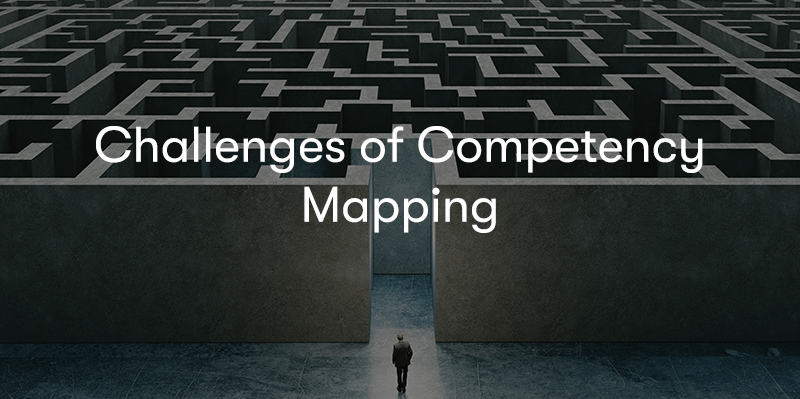
Competency mapping, while beneficial, can also present certain challenges for organisations. Here are some of the common challenges faced during the competency mapping process:
Subjectivity
Competency mapping involves gathering data from various sources, such as interviews and surveys. The interpretation of this data can be subjective, leading to potential biases in identifying and prioritising competencies.
Defining Competencies
Defining competencies in a clear and unambiguous manner can be challenging. Different stakeholders may have varied perspectives on what constitutes a specific competency, leading to inconsistencies in the mapping process.
Data Collection and Analysis
Collecting and analysing data from different sources can be time-consuming and resource-intensive. Proper data collection methods and analytical tools are needed to ensure accurate and reliable results.
Resistance to Change
Employees and managers may resist competency mapping initiatives if they perceive them as threatening or as an additional burden on their workload. Overcoming resistance and fostering buy-in is crucial for the success of the process.
Resource Constraints
Smaller organisations or those with limited HR resources may find it challenging to allocate time and personnel for competency mapping. Lack of dedicated resources can impact the quality and thoroughness of the mapping exercise.
Complexity of Job Roles
Some job roles may be highly complex and multifaceted, making it difficult to identify and map all the required competencies accurately.
Overlapping Competencies
There can be instances where competencies overlap between different job roles, leading to confusion in defining unique sets of competencies for each role.
Updating Competency Frameworks
As organisations evolve, job roles and the required competencies may change over time. Maintaining and updating competency frameworks to stay relevant can be a continuous challenge.
Data Privacy and Confidentiality
Competency mapping often involves collecting sensitive information about employees. Ensuring data privacy and confidentiality is essential to build trust and protect employees' rights.
Alignment with Organisational Strategy
Mapping competencies to support the organisation's strategic goals can be challenging. A lack of alignment may result in a mismatch between workforce capabilities and the organisation's future needs.
Measuring Competencies
Measuring and quantifying competencies objectively can be difficult. The absence of standardised metrics for evaluating competencies can make it challenging to assess progress and improvements accurately.
Integration with HR Processes
Successfully integrating competency mapping into HR processes, such as recruitment, training, and performance management, requires careful planning and coordination.
Despite these challenges, competency mapping remains a valuable tool for organisations to align their workforce with strategic goals, enhance performance, and support employee development. By addressing these challenges through careful planning, stakeholder engagement, and continuous improvement, organisations can maximise the benefits of competency mapping while minimising potential obstacles.
Final Notes on Competency Mapping
In conclusion, competency mapping is a powerful HR tool that helps organisations identify and assess the skills, knowledge, and behaviours required for employees to excel in their roles. By creating a comprehensive competency framework, organisations can set clear performance expectations, enhance recruitment and selection processes, and design targeted training and development programs.
Additionally, competency mapping supports effective performance management, succession planning, and career development. Despite its challenges, a collaborative approach involving various stakeholders ensures a successful competency mapping process. Embracing competency mapping fosters a culture of continuous improvement, leading to a more engaged, skilled, and future-ready workforce.


